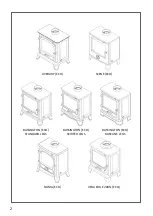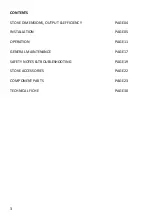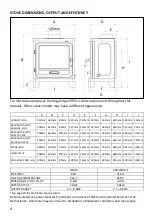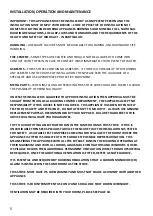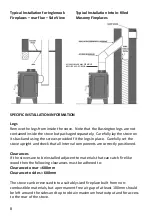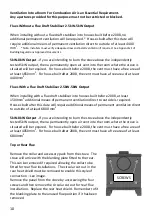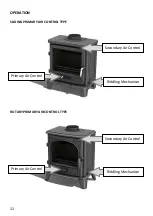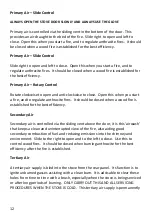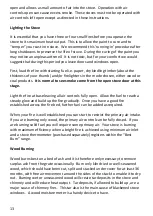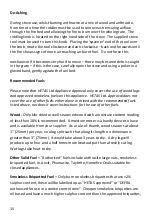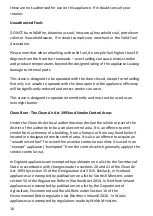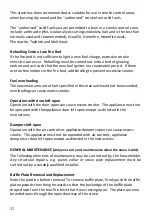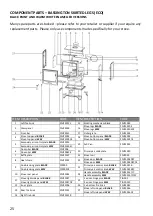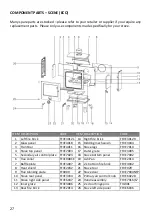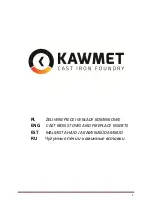
13
open and allows a small amount of air into the stove. Operation with air
controls open can cause excess smoke. These stoves must not be operated with
air controls left open except as directed in these instructions.
Lighting the Stove
It is essential that you have three or four small fires before you operate the
stove to its maximum heat output. This is to allow the paint to cure and to
“temper” your cast iron stove. We recommend this ‘running-in’ procedure after
long shutdowns to preserve the life of stove. During the curing of the paint you
may notice an unpleasant smell. It is not toxic, but for your comfort we would
suggest that during this period you leave doors and windows open.
First, load the fire with starting fuel i.e. paper, dry kindling timber (about the
thickness of your thumb) and/or firelighters in the mode chosen, either wood or
coal products.
It is normal to see smoke come from the open stove door at this
stage.
Light the fire at base leaving all air controls fully open. Allow the fuel to reach a
steady glow and build up the fire gradually. Once you have a good fire
established across the fire bed, further fuel can be added as required.
When your fire is well established you can start to restrict the primary air intake.
If you are burning only wood, the primary air control can be fully closed. If you
are burning solid fuel you will require some primary air. Your stove is burning
with maximum efficiency when a bright fire is achieved using minimum air inlet
and a stove thermometer (purchased separately) registers within the “Best
Burn” range.
Wood Burning
Wood burns best on a bed of ash and it is therefore only necessary to remove
surplus ash from the grate occasionally. Burn only kiln dried or well-seasoned
wood, which should have been cut, split and stacked under cover for at least 36
months, with free air movement around the sides of the stack to enable it to dry
out. Burning wet or unseasoned wood will create tar deposits in the stove and
chimney and will reduce heat output. Tar deposits, if allowed to build up, are a
major cause of chimney fires. This tar also is the main cause of blackened stove
windows. A wood moisture meter is a handy device to have.


